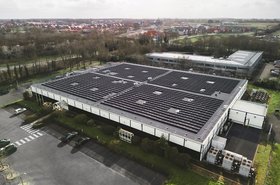For a long time, the major data center hubs have been known by the acronym FLAPD – Frankfurt, London, Amsterdam, Paris, and Dublin – with everywhere else falling under the generic term of ‘secondary markets’. However, that combination of letters may soon need to be revised, with the addition of an ‘S’ or a ‘G’.
Scotland – or Glasgow, if we want to keep it city-specific – has all of the attributes to become one of the go-to choices for data centers. There are a broad range of reasons, but the case for hosting here is becoming more compelling as events unfold.
There are factors outside of Scotland playing their part. Data center vacancy rates in the FLAPD cities have plummeted in the past four years – and even across all 14 European markets tracked by CBRE. Warsaw, for example, is widely considered a secondary market and is one of the worst locations for data centers from a sustainability point of view, but the city has still seen its vacancy rate fall from 37 percent to 16 percent since 2019.
There is also limited scope for the development of new data centers. Ireland’s moratorium on new facilities in the greater Dublin area is a prime example, with the energy needs of data centers placing too much pressure on the already stretched power grid. The same is true to lesser degrees in other established markets, with power and land availability highlighted as particular challenges.
AI growth is putting pressure on data center capacity
Against this backdrop, there is still massive demand for data center capacity. CBRE reported that during 2023 there were 511 megawatts of demand, outstripping supply of 467 megawatts across the FLAPD markets, largely driven by the needs of hyperscalers and the growing demands of artificial intelligence (AI).
The lack of data center capacity is a real limiting factor for AI. Not only are current facilities already nearing capacity, many of them haven’t been designed to run the higher power loads required. We can’t rely on existing data centers to provide the infrastructure necessary to take advantage of the opportunities AI will present.
Ultimately, all of this means the emphasis has to be on finding the right alternatives to the current default data center locations. And that is where Scotland comes into its own with what it can offer.
Why your next data center should be in Scotland
From a sustainability perspective, Scotland is second to none. While the weather may have a miserable reputation, it is nonetheless ideal for data centers. A cooler climate means we can rely more on nature to keep equipment at optimum temperatures, with less of a need for energy-intensive air conditioning.
Scotland’s energy mix also consists of a much higher than average share of renewables. The carbon intensity – a measure of how clean electricity is – of Scotland’s grid is well ahead of the other European countries and even compares favorably against other parts of the UK.
Relocating a data center from Warsaw to Glasgow could cut the carbon intensity of its energy by as much as 99 percent. Scotland’s carbon intensity is one-quarter of London’s, meaning moving a 200-rack facility could save more than six million kilograms of CO2 equivalent, equal to over 14 million miles traveled by the average mid-sized car.
There is a strong cost imperative too. Relocating to Scotland could save up to 70 percent in operational costs compared to other markets, partially thanks to the cooler climate. The cost of land is another major factor – data center-ready land in Glasgow can cost up to 90 percent less than Slough, Greater London.
Finally, Scotland provides access to cost-effective talent. The average IT wage in Scotland is £43,720 ($54,420) per year, according to figures from Glassdoor, compared to £47,035 ($58,540) in London, €50,900 ($54,215) in Dublin, €55,624 ($59,246) in Frankfurt, and €59,000 ($62,842) in Amsterdam. That could mean significant savings without compromising on quality – we have world-renowned academic institutions bringing through the next generation of workers.
Scotland has largely been overlooked as a data center market – but that is on the cusp of changing. The country has all the attributes to be the next prime location for hosting more data center capacity, supporting the growth of AI and making the provision of IT services more sustainable in the process.






